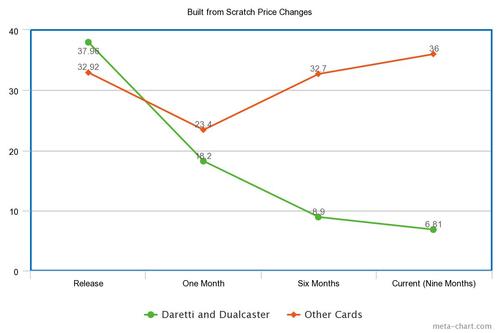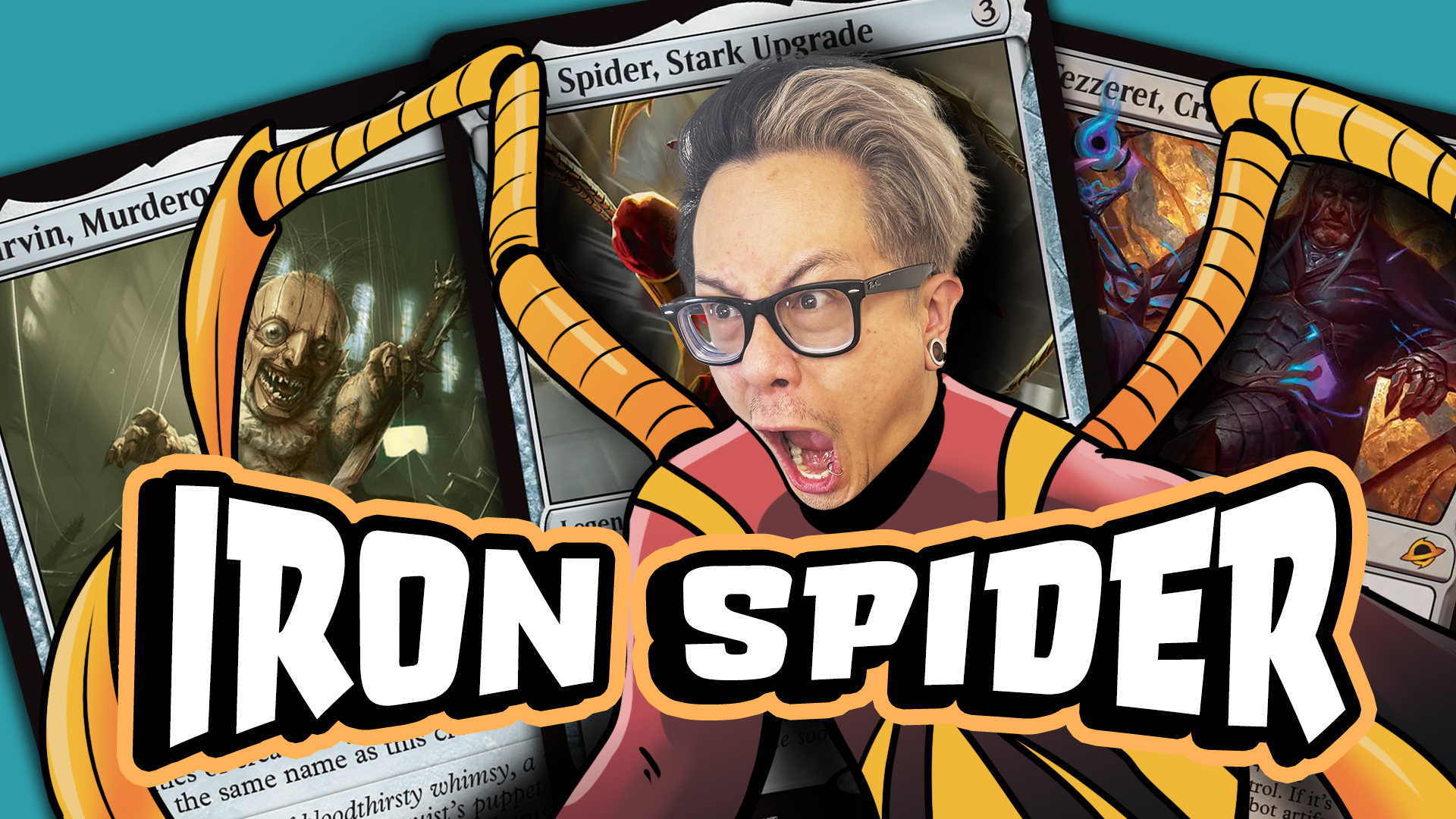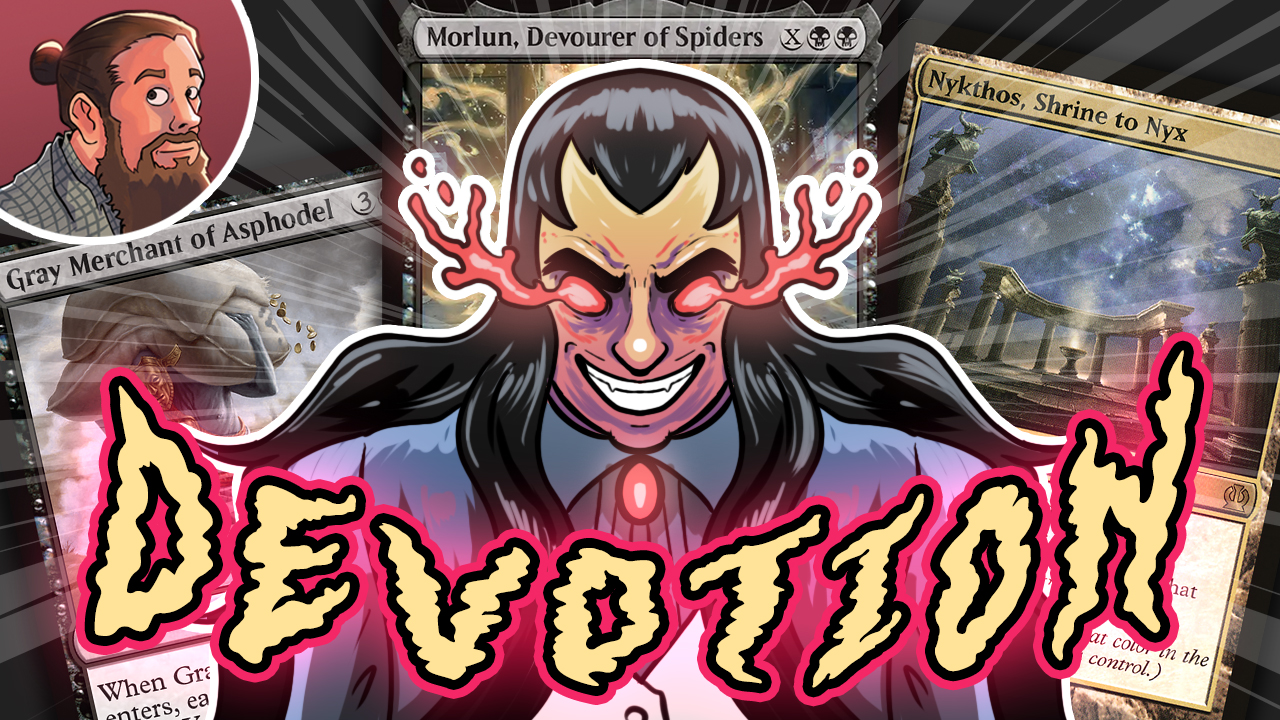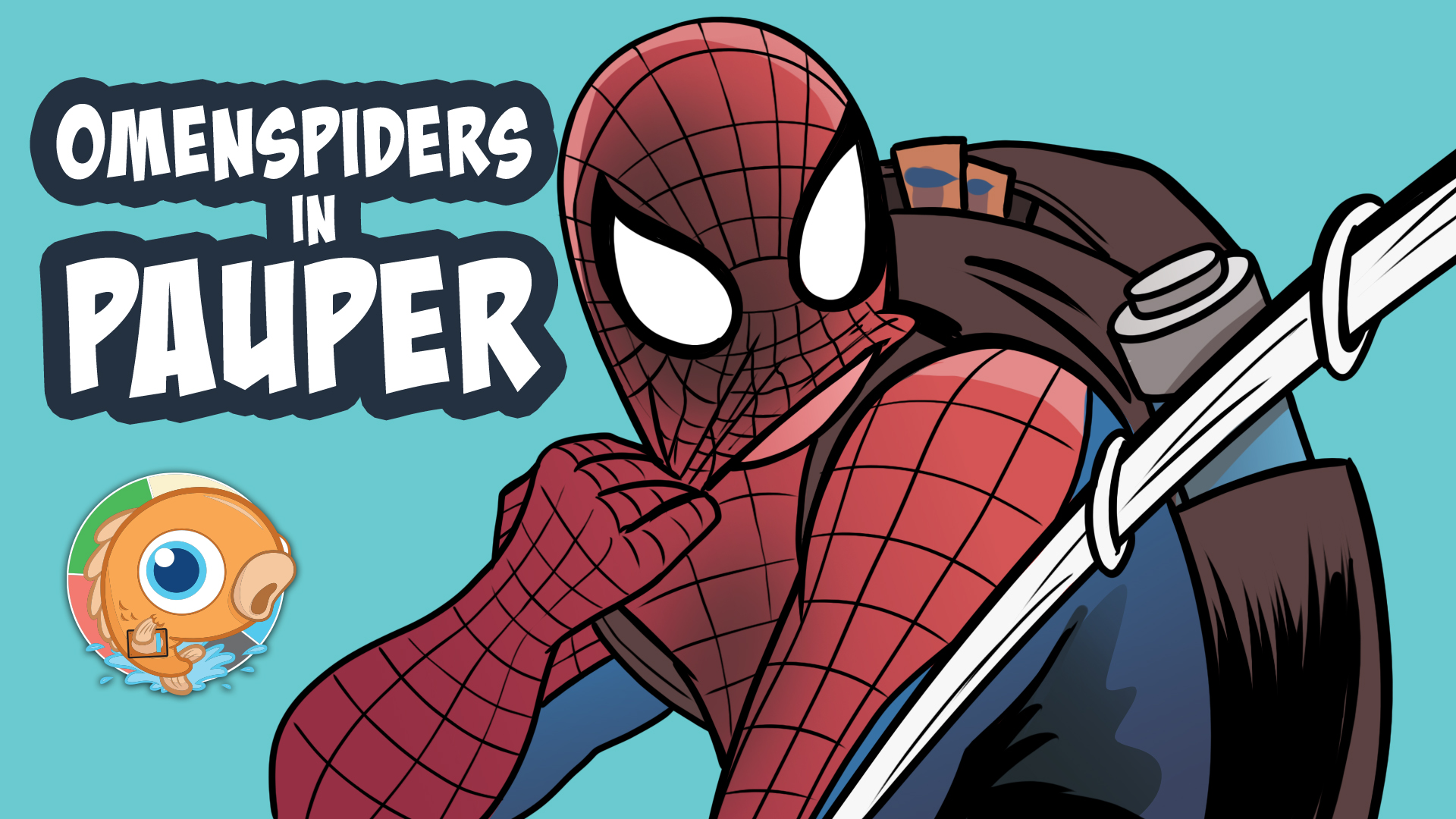The Recent History of Plus-EV Supplemental Products
When Wizards announced the Magic Origins Clash Pack would contain not only a $15 Windswept Heath but also a $18 Collected Company along with several $2-$5 rares and uncommons, the response from the community was a healthy mix of excitement, joy and disbelief that Wizards would pack so much value into a big box store supplemental product. When a supplemental product has an expected value higher than MSRP, it is usually because it contains powerful new cards which sell for a premium (think True-Name Nemsis) or it is a reprint product that is very limited in its release (various From the Vault decks and Cbommander's Arsenal); in these cases the EV doesn't really matter as much because these products are either sold for above MSRP or are so difficult to get that the question isn't does this contain enough value but can I find one?
For me the Magic Origins Clash Pack is especially interesting because at first glance it seems to fly in the face of the theory of reprint equity that I have been discussing and refining over the past few months. Why would Wizards intentionally put both Collected Company and Windswept Heath in the same supplemental product when either of these cards by themselves should have been enough to sell the product? My guess would be that Wizards simply underrated and undervalued Collected Company.
It is important to remember that Wizards designs these products months, if not years in advance, so when the Magic Origins Clash Pack was put together, Collected Company was yet to be printed and in the hands of players — all Wizards had to go on was their internal testing of the card. Figuring out the value of a card like Windswept Heath is relatively easy; the EV cap on a five-card rare cycle is between $15 and $20, and the fetchland cycle was likely to push up against the cap. But pegging the price of a card like Collected Company is a bit harder. I, and many others in the finance community, figured it was a good but not a format defining rare that might be worth $5 (certainly not pushing $20). If Wizards came to the same conclusion, it makes perfect sense to include it along with Windswept Heath (the "chase card") as another Siege Rhino type rare. In fact, Collected Company at $5 would put the EV of the clash pack almost exactly at its MSRP, which is the sweet spot where things like foils and new art can be the reason for a player to buy the product.
But I'm not here today to talk primarily about reprint equity. Instead we are going to be looking at five "big box store" (unlimited printing) preconstructed supplemental products that started off with an expected value higher than their MSRP. Our goal is not so much to determine if the cards in these products lose value (I can tell you right now that they do) but how quickly they lose value, how much value they lose, and which cards lose the most. In theory looking back over the history of these products can tell us a lot about the future of the cards in the Magic Origins Clash Pack and potentially help answer questions like how low will Collected Company go? Will it recover? And what about Windswept Heath and Siege Rhino? Let's start by looking at the poster child for plus-EV supplemental: the Commander 2013: Mind Sieze deck.
Commander 2013: Mind Sieze

I should make it clear right from the get go that we are starting our study with two assumptions. First, low-value commons and uncommons and bulk rares are already at their floor so being reprinted is not going to cause them to lose a significant amount of value (or any value at all). Whether there are 1,000,000 Viselings or 5,000,000 Viselings dosen't really matter because $0.17 is the floor for a copy of the card. Below this price it isn't really worth anyone's time to sell the card. Second, mid-value uncommons and commons (for instance, Vampire Nighthawk) don't typically lose much value from a reprinting in a supplemental product. As a result, our analysis is going to focus on valuable rare and mythics along with any chase uncommons. For Mind Seize in specific, I remember spending release weekend driving from Wal-Mart to Target to Wal-Mart and buying as many copies as possible because I could tear them open and buylist the singles for a profit of between $20 and $30 per deck. Let's see if the numbers match up with my memory.
| Card | Initial Price | Time Until 50% Decrease | Floor | Current Price |
| Jeleva, Nephalia's Scourge | $4.98 | Three Months | $0.86 | $0.89 |
| Baleful Strix | $9.04 | Seven Months | $3.48 | $4.00 |
| Nekusar, the Mindrazer | $3.99 | Three Months | $0.98 | $0.98 |
| Thraximundar | $4.43 | One Months | $0.89 | $0.90 |
| True-Name Nemesis | $45.00 | Seven Months | $17.25 | $17.35 |
| Army of the Damned | $1.99 | One Year | $1.08 | $1.56 |
| Decree of Pain | $4.62 | Three Months | $1.01 | $1.15 |
| Eye of Doom | $1.68 | Two Months | $0.27 | $0.31 |
| Illusionist's Gambit | $3.60 | Two Months | $0.37 | $0.40 |
| Propaganda | $1.99 | N/A | $1.99 | $2.20 |
| Sol Ring | $2.00 | N/A | $1.79 | $2.80 |
| Sudden Spoiling | $1.00 | One Week | $0.33 | $0.39 |
| Command Tower | $2.20 | Eight Months | $1.08 | $3.09 |
| Totals | $86.52 | $31.35 | $36.02 |
While Mind Seize is obviously an extreme example; the top 13 cards in the product were worth $86.52 at release which means that even with a 35 percent spread, you could buylist them for about $57 and have 87 cards left over including some good uncommons like Vampire Nighthawk and Fog Bank along with a handful of bulk rares. This was brought about by a perfect storm of events, most notably a huge legacy tournament dominated by True-Name Nemesis right after the set released. Some interesting patterns start to emerge when you look at the numbers all together.
First, the two cards that see play on tournament tables True-Name Nemesis and Baleful Strix took — by far — the longest to decline to half of their presale price at around seven months. In fact, these cards barely lost any value over the three month period after the product was released. Second, most of the valuable casual cards, both reprints (Decree of Pain), and new cards Jeleva, Nephalia's Scourge and Nekusar, the Mindrazer declined two or three times as fast as the tournament cards, falling to half of their presale prices in only two or three months. Finally, some of the mid-tier reprints (specifically Sol Ring and Propaganda) didn't really decline at all, which might suggests that even uncommons worth a couple of dollars are relatively immune to reprinting in preconstructed decks.

It's worth noting that while the deck appears to be plus-EV at the three month point, decreases in buylist prices made selling the deck for a profit more difficult.
Commander 2014 - Built from Scratch

Built from Scratch was the most valuable of the Commander 2014 decks during presales based mostly on the inflated price of a handful of new cards — plus having Wurmcoil Engine didn't hurt. While I'm not sure there was a window to open and sell the product to a buylist for a profit, at retail prices the red deck came close to the fabled Mind Seize in value.
| Card | Initial Price | Time Until 50% Decrease | Six Month Price | Current (9 month) Price |
| Daretti, Scrap Savant | $17.89 | One Month | $4.50 | $3.70 |
| Goblin Welder | $3.40 | Seven Months | $1.90 | $1.60 |
| Solemn Simulacrum | $4.60 | N/A | $4.20 | $4.20 |
| Wurmcoil Engine | $9.80 | N/A | $11.80 | $16.00 |
| Dualcaster Mage | $19.98 | One Month | $4.20 | $3.20 |
| Feldon of the Third Cane | $2.50 | Nine Months | $1.60 | $1.20 |
| Sol Ring | $2.00 | N/A | $2.80 | $2.80 |
| Chaos Warp | $3.82 | N/A | $2.80 | $2.50 |
| Caged Sun | $4.00 | One Month | $4.00 | $3.40 |
| Reliquary Tower | $1.00 | N/A | $2.80 | $3.50 |
| Flamekin Village | $1.80 | Five Month | $0.80 | $0.80 |
| Totals | $70.79 | $41.40 | $42.90 |
Built from Scratch is one of the most interesting examples of how plus-EV preconstructed decks lose value. Within six months retail prices had dropped over 40 percent bringing the EV to just about equal with MSRP (especially considering fees/shipping and the difficulty in selling cards for TCG-mid), but only a handful of expensive card dropped in value during this time and many actually increased slightly in price. In fact, if you remove the two big losers Daretti, Scrap Savant and Dualcaster Mage (which were hyped as potentially being legacy-playable at the time of release), the rest of the cards in the set lost a grand total of $0.22 in value during this period.
What the lesson here is I'm not exactly sure, although the big losers do provide a good reminder of just how difficult it is for a card to break into legacy. Since the cards from Commander decks are not legal in any other competitive format, this is actually quite important since the only other demand for these cards will be from casual players. My guess is everyone (including the vendors setting presale prices) was afraid they were going to miss out on the next True-Name Nemesis so both Dualcaster Mage and Daretti, Scrap Savant were priced conservatively during presales — sort of a Commander-centric Jace, the Mind Sculptor effect. Once it became clear that there would be no shortage of the deck (in fact I just saw one in my local big box last week marked down 15 percent) and that neither card was going to become an eternal staples, the inflated prices quickly crashed.

Fate Reforged Clash Pack


While it would seem, at least on first glance, that the Fate Reforged Clash Pack would be a the best comparison to the Magic Origins Clash Pack since they are both Clash Packs printed only six months apart, there is one major problem: all of the chase cards from the FRF edition (Hero's Downfall, Courser of Kruphix, Whip of Erebos and Doomwake Giant) were already in decline when the product was reprinted. This was a great trick by Wizards to squeeze more value from standard-only cards with little long-term reprint equity. This is very different than Siege Rhino, Windswept Heath, and Collected Company which all have another year (or more) left in Standard and are all Modern playable. As a result, it is really difficult to tease out just how much of Courser of Kruphix's price decline is attributable to the reprinting and how much is just the natural continuation of the price decline of a post-peak card heading towards rotation.
| Card | Percent Change Three Months Pre-Release | Percent Change Three Most Post-Release |
| Chase FRF Clash Pack Cards | ||
| Hero's Downfall | -30.7 percent | -20.25 percent |
| Courser of Kurphix | -31.65 percent | -22.11 percent |
| Whip of Erebos | 145 percent | -57.78 percent |
| Non-Clash Pack Theros Cards | ||
| Sylvan Caryatid | -47.02 percent | -21.25 percent |
| Polukranos, World Eater | -54.2 percent | -33.33 percent |
| Xenagos, the Reveler | -54.07 | 4.82 percent |
As you can see on the chart, the price trajectory of Courser of Kruphix, the chase rare of the Fate Reforged Clash Pack is almost exactly the same as its buddy Sylvan Caryatid, which was not in the Clash Pack. This is true both before and after the release of the Clash Pack, which suggests to me that the price drops are more about the natural ebb and flow of Standard than the reprinting. At the same time, the Fate Reforged Clash Pack was only just barely plus-EV. For your $25.00 investment you would get about $30 in non-bulk cards, which again means that with fees and shipping, opening and selling this product for a profit wasn't really possible. So unlike the Magic Origins Clash Pack (which started off with a value nearly twice MSRP), the Fate Reforged version really didn't need to lose much value to get to the "normal" range.
Planechase 2012 - Night of the Ninja

| Card | Numer in Product | One Year Price | High | Current Price |
| Baleful Strix | 2 | $15.00 | $23.00 | $4.50 |
| Glen Elendra Liege | 1 | $2.00 | $2.35 | $2.25 |
| Higure, the Still Wind | 1 | $1.00 | $1.28 | $1.09 |
| Ink-Eyes, Servant of Oni | 1 | $5.00 | $5.83 | $4.10 |
| Silent-Blade Oni | 1 | $2.40 | $8.80 | $7.31 |
| Sakashima's Student | 1 | $8.50 | $10.18 | $10.10 |
| Vela the Night-Clad | 1 | $2.50 | $4.10 | $3.87 |
| TOTALS | 8 | $51.40 | $78.54 | $37.72 |
I almost didn't include Night of the Ninja because its release predates the MTGGoldfish price charts, so I was unable to figure out exactly what the preorder prices were for these cards. The earliest data we have is 10 months after the product was released, but the numbers are quite stunning. At that time, just the two copies of Baleful Strix were worth 150 percent MSRP. If you were willing to sell all eight cards of significant value, even with a 35 percent spread you would have made about $14 profit per deck.
If my memory holds, both Night of the Ninja and Chaos Reigns (which contained two copies of the $15 Shardless Agent) were basically free-rolls when they were available — you could sell the chase uncommons and get the rest of the deck for free.
Magic Origins Clash Pack


Now for the product that started us down this road in the first place, the Magic Origins Clash Pack. Unfortunately, studying other plus-EV precons didn't really give us a definitive answer to how these products lose value, although it did give us three general rules. First, all unlimited printing supplemental products will decrease in value to the point where you can no longer sell them profitably. While it might be simpler to say these products end up being negative-EV, this isn't exactly true. In many cases they are still plus-EV based on the assumption you can sell every single card for full retail price, but this assumption is obviously false. When you consider fees, shipping, and spread, all of the products in our study ended up being "not worth it" in the long run. Second, this typically happens quickly. If there is a window for actually profiting from these products, it will be somewhere between one week and one month post release. Past this point buylist prices will decrease enough that the profit will be minimal or non-existent even if retail prices are high. Third, cards that see play in competitive formats will take longer to decrease in price while casual cards will typically fall quicker, like Dualcaster Mage or Daretti, Scrap Savant. These cards give up value so the tournament staples don't have to lose as much (of course, if all of the expensive cards are tournament staples, something has to give).
So, with this in mind, let's see if we can figure out how the Magic Origins Clash Pack can reach the required amount of value. Considering the MSRP is $29.99, this means we need to get the value of the sell-able cards to between $28 or $33 retail (random commons, uncommons and bulk rares are considered valueless in this exercise). Here's what we are working with:
| Card | Initial Price | Current Price | Hypothetical Three Month Price |
| Honored Hierarch | $8.00 | $1.05 | $0.50 |
| Valorous Stance | $3.00 | $1.66 | $1.50 |
| Dromoka's Command | $6.60 | $4.50 | $4.00 |
| Collected Company | $17.90 | $12.30 | $10.00 |
| Windswept Heath | $14.00 | $11.90 | $10.00 |
| Anafenza, Kin-Tree Spirit | $2.50 | $2.10 | $1.00 |
| Siege Rhino | $5.00 | $3.00 | $3.00 |
| Avatar of the Resolute | $1.60 | $1.50 | $1.00 |
| Totals: | $58.60 | $38.10 | $31.00 |
The good news is that the Magic Origins Clash Pack has already given up most of the necessary value decreasing nearly 35 percent over the past couple weeks. This means you don't have to worry about your copies of Collected Company and Windswept Heath decreasing in value much further. This said, at $38.10, the current price is still a bit too high. I think the most likely outcome is the two most expensive cards (Windswept Heath and Collected Company) lose a couple more dollars while most of the cheaper cards either maintain their current price or tick downward slightly. Still, it is very unlikely that either of the chase cards end up falling much below $10 (with $8 being, perhaps, the absolute floor for either card).
In the long run, it seems likely that the clash pack is only a blip on the radar as far as the prices of Collected Company and Windswept Heath are concerned. Godless Shrine was reprinted in the Dragon's Maze Event Deck and the long-term price impact of the reprinting seems to be negligible (another card from that deck, Parallel Lives, is currently pushing $6 as a casual-only rare).
Over the long haul, the price of these cards is not going to be influenced primarily by their appearance in the Clash Pack, but by the level of play they see in eternal formats moving forward. Remember, while EV is a consideration in the short term, once a product is out-of-print everything changes. The Magic Origins Clash Pack could (but likely won't) be worth $100 three years from now as far as EV is concerned. So even though you won't be able to sell the Clash Pack for a profit in the short term, if you like the long-term prospects of the chase cards, picking up Clash Packs now is still a fine plan.
Conclusion
Anyway, that's all for today. Leave your thoughts, opinions and idea in the comments. As always, you can reach me on Twitter (or MTGO) @SaffronOlive).
The Magic Origins Clash Pack is currently available on Amazon.com for $28.00













